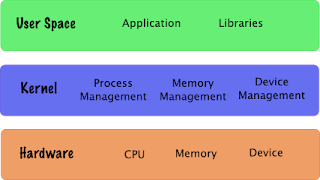A process in an operating system is representing by a data structure known as a process control block (PCB) or process descriptor.
The PCB contain important information about the specific process include:-
- The current state of the process i.e., whether it is ready, running, waiting, or whatever.
- Unique identification of the process in arrange to track "which is which" information.
- A pointer to parent process.
- Similarly, a stick to child process (if it exists).
- The priority of process (a part of CPU scheduling information).
- Pointers to place memory of processes.
- A register save area.
- The processor it is running on.
The PCB is a certain store that allow the operating systems to locate key information about a process. Thus, the PCB is the data structure that define a process to the operating systems.


